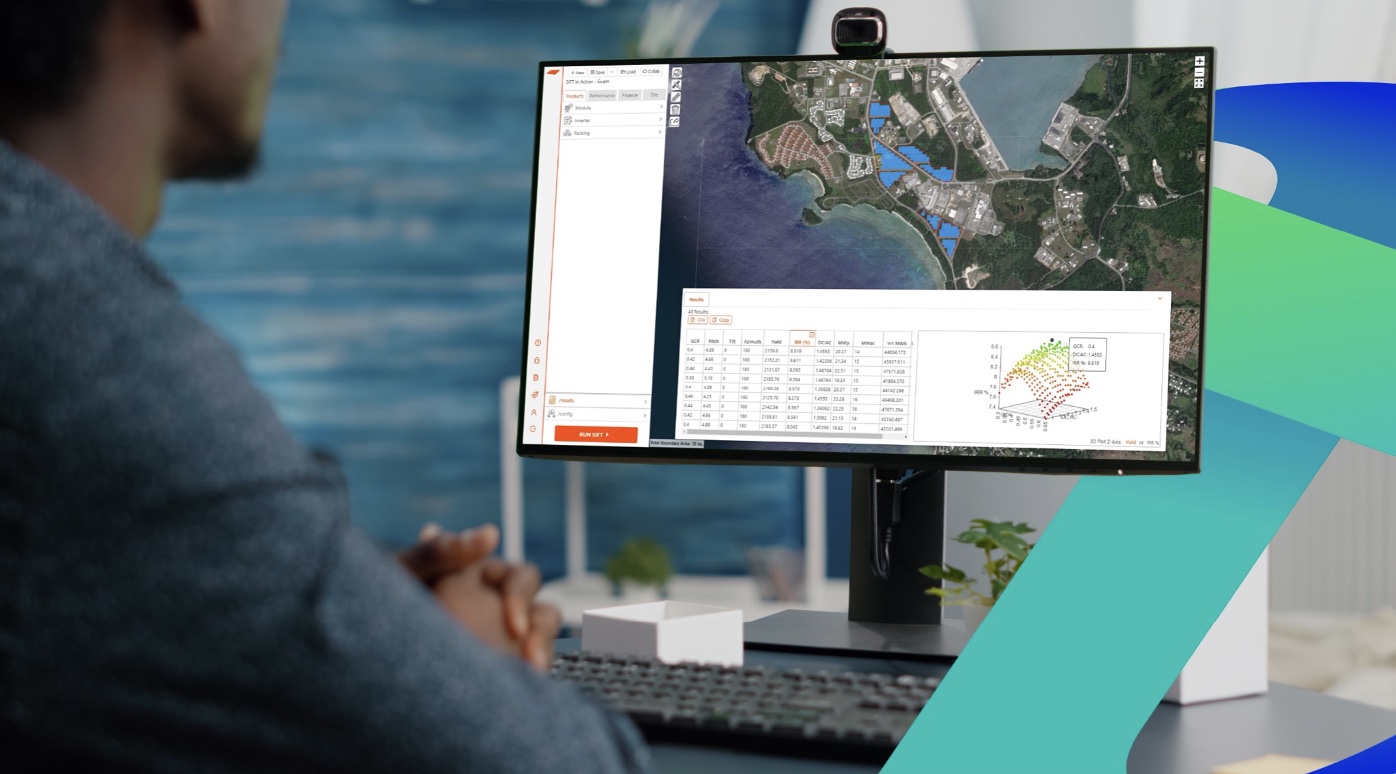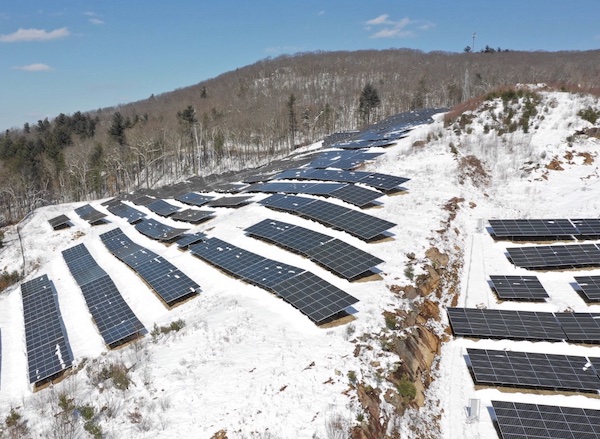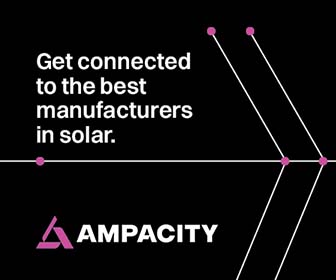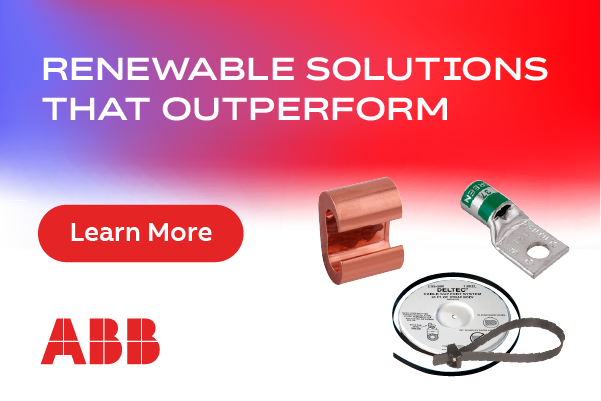PV Alchemy: Transforming project data into solar gold
To generate higher yields and more robust returns from utility solar projects, forward-looking developers turn to solar feasibility software. Specialized software drives higher optimization levels, sifting through the labyrinth of complex options, balancing criteria like weather, location, components, and construction, to achieve the lowest cost of energy and the strongest IRR.
Competitive advantages achieved with advanced feasibility software help developers:
- Make smart, informed, and upfront decisions to analyze and compare thousands of configurations by selecting the most optimal products for their site.
- Speed up the development cycle, and eliminate assumptions for results in seconds instead of weeks.
- Improve IRR for greater accuracy while exploring hundreds of layouts to uncover hidden project potential, from a reduction in installation costs to an increase in NPV or IRR, for a more competitive PPA.

Unlock hidden value and reduce risks
Long before detailed PV design and financial tools come into play, developers large and small face the same dilemma: how to make early-stage development choices to maximize returns and lower risks. Leading project feasibility platforms provide the digital intelligence needed to direct project strategy, powering confident solar decision making.
These early-stage development and planning tools are used at the very beginning of the project development cycle to analyze hundreds of potential layouts, detailed site conditions, and a variety of performance goals and financial models. By iterating through the design, performance, and financial outcomes of hundreds of scenarios, these tools ensure the best possible downstream outcome - and puts smart developers ahead.
Developers are able to optimize systems upstream to unlock value downstream, while boosting profitability as their project progresses.
Get the right software in place
Developers need powerful tools to mine site data with confidence and accuracy. Unpredictable site conditions, variable time-of-use rates, and other factors can easily disrupt a project’s well-defined plan, eroding already razor-thin margins. When assessing different software options, look for these criteria:
- A user-friendly, yet robust interface that can seamlessly integrate topography data from various sources, like the U.S. Geological Survey and Google Earth, to ensure accurate slope analysis.
- Cloud-based architecture that will support fast computing to help developers shave weeks off project assessment periods; some can even maximize value on projects up to 1 GW in under a minute.
- Flexible systems that can seamlessly import data from other industry databases like PAN, OND, and PVSyst, and can export data in XLS and CAD formats.
- A comprehensive financial modeling platform to optimize projects against IRR, LCOE, or NPV objectives.
Case study: Optimizing components early in the project lifecycle boosts production

Maximizing land use for a 284-MW midwestern site required a flexible racking solution. At first glance (with a CAD tool), a satellite view indicated that the site’s rolling hills were suitable for a standard tracker using a portrait architecture and a 10 percent grade tolerance.
Using comprehensive feasibility software, the developer determined that the initial site strategy was not viable. Because the local jurisdiction would not allow site grading, a standard tracker with a 10 percent slope tolerance would have delivered only 70 MWs of capacity, and required a complex wiring plan.
The developer used a feasibility tool to refine the site’s potential to make the project work, while avoiding costly and time-consuming civil and design work. It not only imported data from the US Geological Survey and Google Elevation database, it also ran a topographical analysis to assess what could be done with different technologies.
Within minutes, the team had a completely different picture: a more flexible tracker with up to 20 percent grade tolerance would offer far greater capacity, increasing annual production by 229 percent using a standard monofacial panel. Seeing an opportunity to further optimize yield, the developer ran another simulation combining bifacial technology with the 20 precent-grade tracker.
The results were astounding: The same 247-MW site could now deliver an estimated 299 GW hours of production annually — a 257 percent increase over the initial configuration with the standard 10 percent-grade tracker.
Share feasibility data with partners to drive smarter decisions

The census. Data-driven feasibility planning conducted early in the project lifecycle doesn't always trickle down to other stakeholders later in the process, like EPCs responsible for system design and component selection. Between upfront project feasibility and downstream execution lies a chasm of component options that will impact budgets, schedules, and project returns for decades.
Wisdom token. When developers share feasibility data with partners to drive a more thoughtful component decision, the benefits are translated into mid and downstream advantages for a more successful project.
Innovative project feasibility tools help developers bridge this divide to optimize a site's potential and guide EPCs through system foundation and racking decisions typically addressed later in the process. Sharing data to drive smarter foundation and racking configurations represents a unique opportunity to further optimize PV, increase project IRR and system returns.
Designed to be used at the start of a project — long before AutoCAD or PVSyst come into play — feasibility tools create a data roadmap to guide a project from genesis through final execution. The output can feed into midstream design tools to help source the optimized foundation and racking options, without change orders and other factors that can erode margins.
Developers can share the analytics and optimizing variables of their feasibility data with their project partners to create a common goal and choose the optimal design. This knowledge sharing is the PV alchemy - transforming upstream feasibility data into downstream project success.

Ashton Vandemark is the founder and CEO of Sunfig, now a part of Terrasmart. He is also the Business Unit Manager of the Solar Instant Feasibility Tool (SIFT), a design, performance, and financial modeling platform that has been used on projects totaling 250GW of potential capacity.
Terrasmart | www.terrasmart.com
Author: Ashton Vandemark
Volume: 2022 November/December








.png?r=1188)



